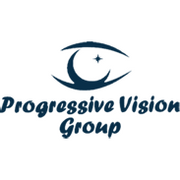High Point Optometrist Explains the Differences Between Nearsightedness & Farsightedness

Refractive disorders such as nearsightedness and farsightedness are the most common eye problems in the United States. Despite their prevalence, there remains confusion regarding the differences between these two conditions. Below, an optometrist from Progressive Vision Group PA in High Point, NC, brings these issues into focus.
Nearsightedness
Nearsighted individuals are afforded a clear view of objects that are near to them. The further away the object is, the blurrier it will be. The condition is a refractive defect in which light waves are focused in front of the retina as opposed to directly on it, and it often occurs when the cornea is too curved or the eye is too long.
People who are nearsighted experience little difficulty working at a computer, reading, or writing but often struggle when attempting to watch television, view the whiteboard at school, or drive.
Farsightedness
 Farsighted individuals, on the other hand, enjoy a clear view of objects that are far away. The closer the object is, the blurrier it will be. The condition is a vision defect in which light is refracted to an area behind the retina as opposed to directly on it, and it often occurs when the cornea is too flat or the eye too short.
Farsighted individuals, on the other hand, enjoy a clear view of objects that are far away. The closer the object is, the blurrier it will be. The condition is a vision defect in which light is refracted to an area behind the retina as opposed to directly on it, and it often occurs when the cornea is too flat or the eye too short.
Farsighted people have little difficulty reading eye charts at their optometrist’s office, whiteboards, and traffic signs, but they may be unable to read the book in front of their face. As such, the condition regularly goes undiagnosed during school vision screenings.
If you require vision correction in High Point, NC, an optometrist from Progressive Vision Group PA is available to help. Whether you’re due for an eye exam or suffer from serious eye problems, their experts will provide you with the personalized service and solutions you need to enjoy the quality of life you deserve. Contact their eye care center online, or call (336) 841-2028 to speak with an optometrist directly.
About the Business
Have a question? Ask the experts!
Send your question

